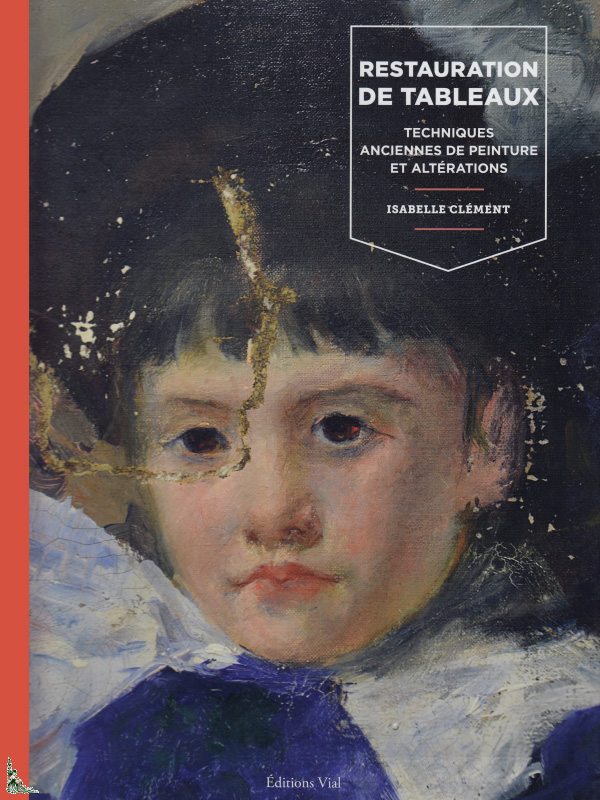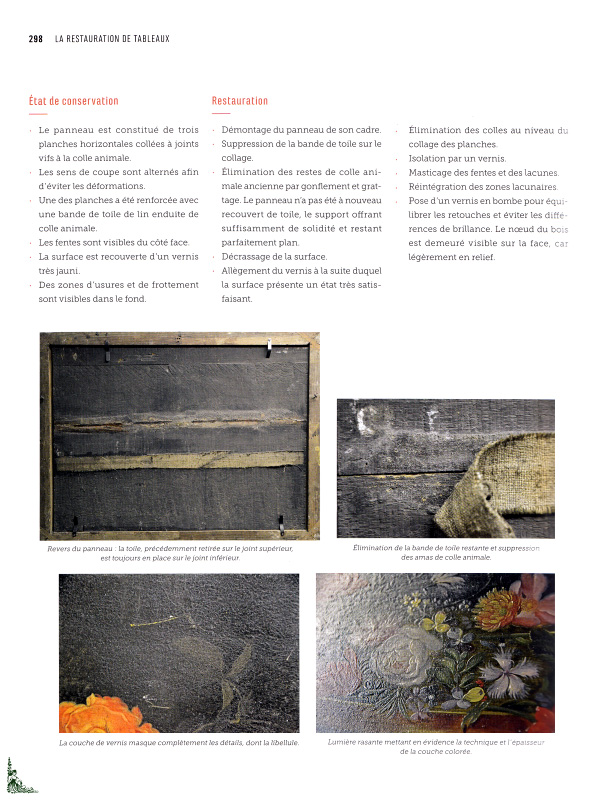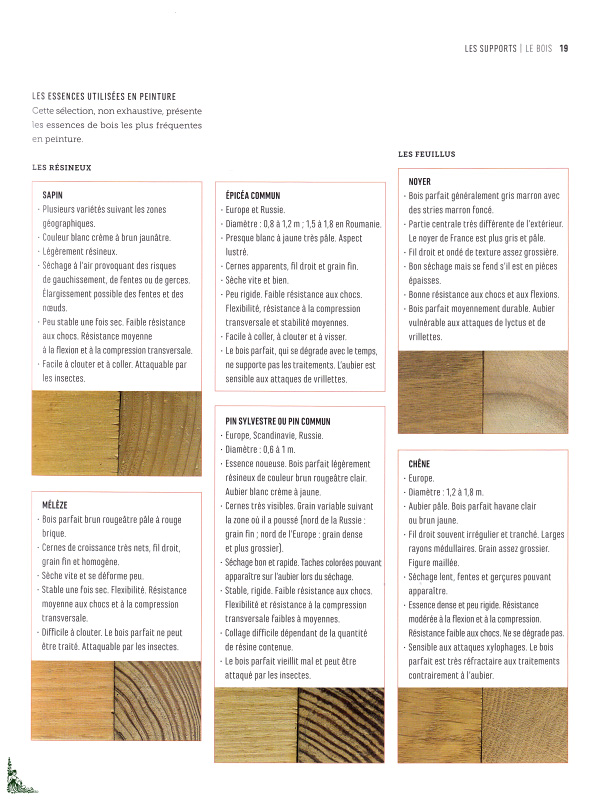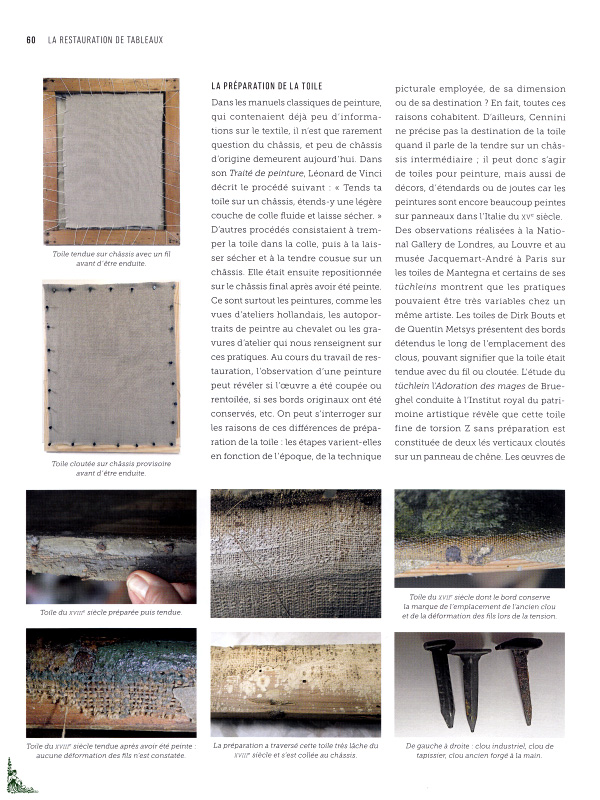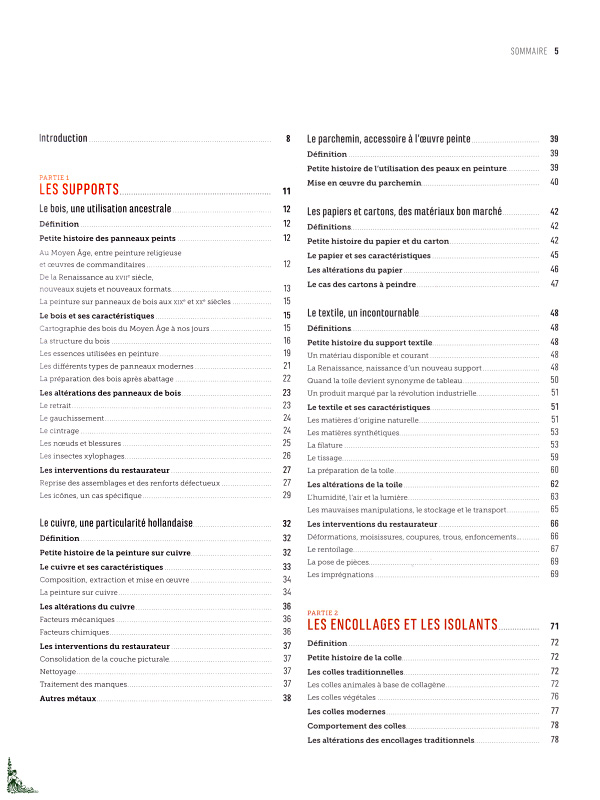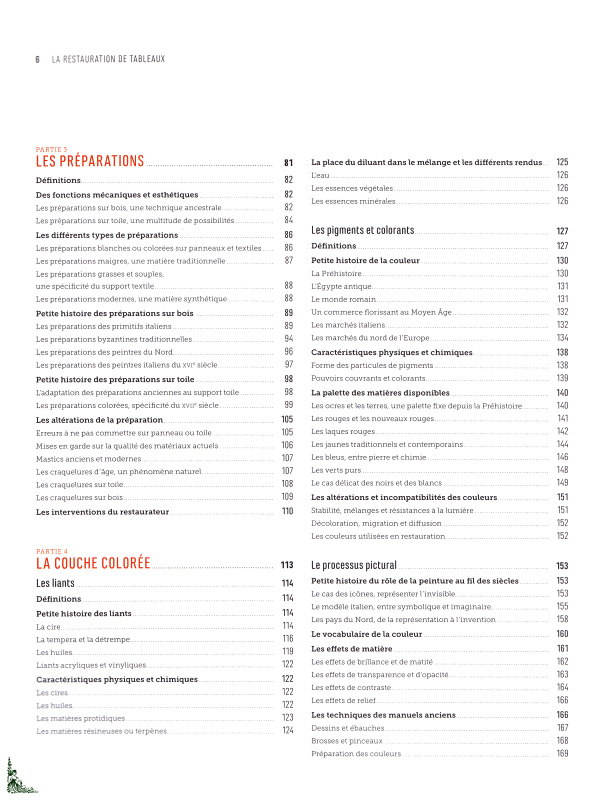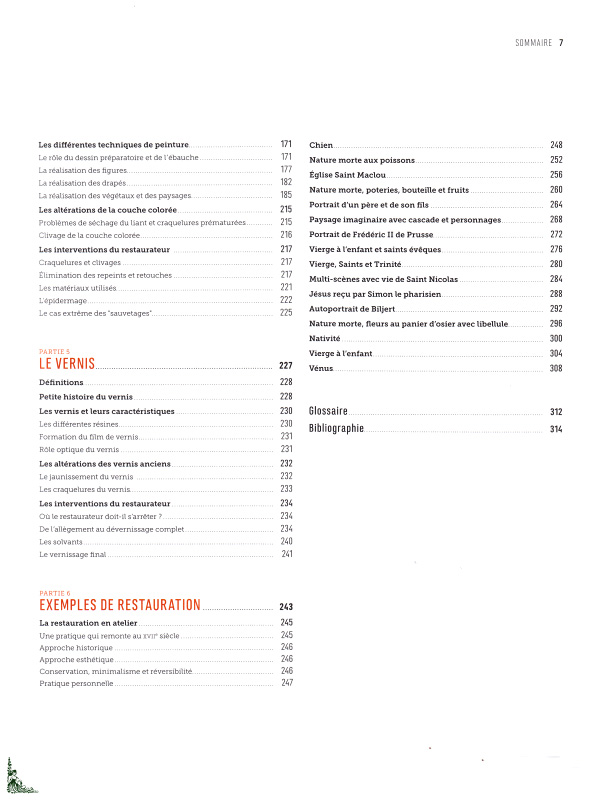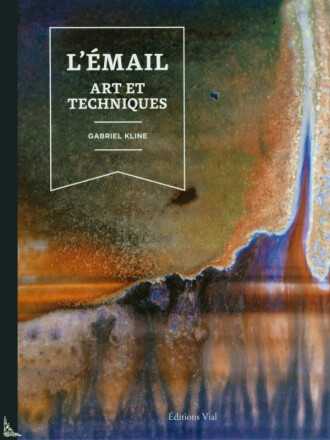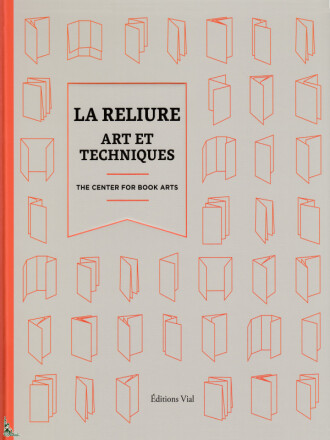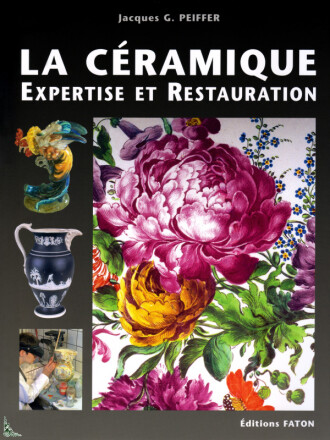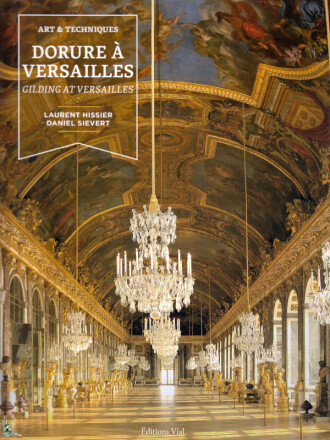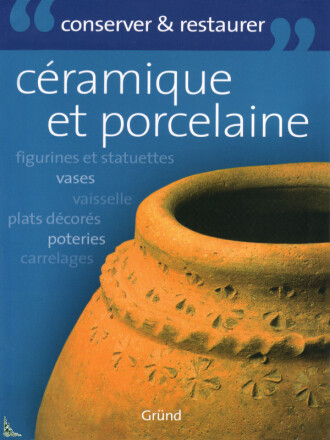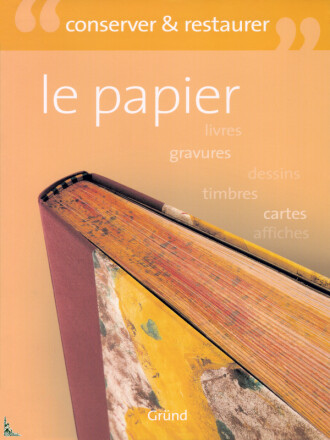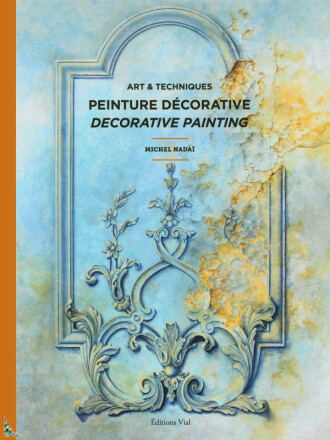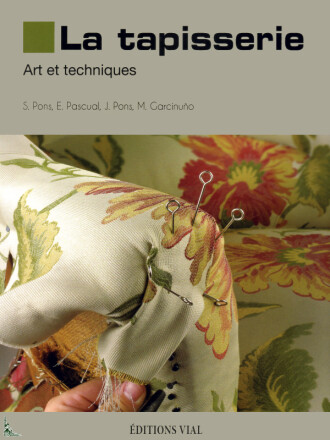Restoration of paintings, ancient techniques and alterations
Contenido del libro
| Autor : | Isabelle Clément |
| Editor : | Vial (2022) |
| Encuadernación : | Hardcover (320 full color pages) 9-½ inches x 12 inches |
| Lengua : | French |
| ISBN : | 978-2-85101-234-0 |
| EAN : | 9782851012340 |
Descripción
Restoration of paintings, ancient techniques and alterations, by I. Clement, Ed. Vial, 9-½ inches x 12 inches ( 24 cm x 31 cm ), hardcover book with 320 full color pages
This great hardcover book with 320 full color pages richly illustrated develops a theoretical and practical approach to ancient painting techniques for the use of restoration students, art historians, restorers, but also painters and art lovers.
If the restoration of painted surfaces requires real artistic skills, it is above all a specialty based on the study of the components of a painting and their properties.
Extremely comprehensive, this work offers a historical, technical and scientific approach to ancient painting processes in order to enable the restorer to identify the causes of the alterations encountered and the solutions that can be implemented to remedy them.
Different elements of a work can undergo alterations: the support, the gluing, the preparation, the colored layer and the finishing varnish. For each of them, the author traces the history of its use in painting based on ancient texts and scientific analyses, and details the characteristic degradations.
Many tests and samples illustrate the different explanations, and restoration files allow you to follow the interventions step by step.
An important part is devoted to the treatment of color: the characteristics of existing pigments and dyes are presented, but also the pictorial effects, the techniques used by the great masters and their favorite palettes.
Contents:
- PART 1: THE SUPPORTS
- WOOD, AN ANCESTRAL USE
- A brief history of painted panels
- Wood and its characteristics
- The alterations of wood panels
- The restorer's actions
- COPPER, A DUTCH PARTICULARITY
- A brief history of copper painting
- Copper and its characteristics
- The restorer's actions
- THE PARCHMENT, ACCESSORY TO THE PAINTED WORK
- A brief history of the use of skins in painting
- Implementation of the parchment
- PAPER AND BOARD, CHEAP MATERIALS
- A brief history of paper and cardboard
- Paper and its characteristics
- Paper alterations
- The case of cartoons to be painted
- TEXTILE, AN ESSENTIAL
- A brief history of textile support
- The textile and its characteristics
- The alterations of the canvas
- The restorer's actions
- PART 2: BONDING AND INSULATION
- A brief history of glue
- Traditional glues
- Modern glues
- Behavior of glues
- Alterations to traditional gluing
- PART 3: THE PREPARATIONS
- Mechanical and aesthetic functions
- A brief history of preparations on wood
- A brief history of preparations on canvas
- The alterations of the preparation
- The restorer's actions
- PART 4: THE COLORED LAYER
- BINDERS
- A brief history of binders
- Physical and chemical characteristics
- The place of the thinner in the mixture and the different renderings
- PIGMENTS AND DYES
- A brief history of color
- Physical and chemical characteristics
- The range of materials available
- Color alterations and incompatibilities
- THE PICTURAL PROCESS
- A brief history of the role of painting over the centuries
- Color vocabulary
- Material effects
- The techniques of ancient craftsmen
- The different painting techniques
- Alterations of the colored layer
- The restorer's actions
- PART 5: THE VARNISH
- A brief history of varnish
- Varnishes and their characteristics
- Alterations of old varnishes
- The restorer's actions
- PART 6: RESTORATION EXAMPLES
- Restoration in the workshop
- Glossary
- Bibliography
The French texts are written by Isabelle Clément.
 Description française
Description française
Restauration de tableaux, Techniques anciennes et altérations
Détails du livre
| Auteur : | Isabelle Clément |
| Éditeur : | Vial (2022) |
| Reliure : | Relié (320 pages couleurs) 24 cm x 31 cm ( 9-½ inches x 12 inches ) |
| Langue(s) : | Français |
| ISBN : | 978-2-85101-234-0 |
| EAN : | 9782851012340 |
Description
Restauration de tableaux, Techniques anciennes et altérations, de I. Clement, Ed. Vial, 24 cm x 31 cm, relié avec 320 pages couleurs
Ce superbe livre de 320 pages couleurs richement illustré, développe une approche théorique et pratique des techniques anciennes de peinture à l'usage des étudiants en restauration, des historiens d'art, des restaurateurs mais aussi des peintres et des amateurs d'art.
Si la restauration des surfaces peintes nécessite de vraies compétences artistiques, il s'agit avant tout d'une spécialité fondée sur l'étude des composants d'un tableau et de leurs propriétés.
Extrêmement complet, cet ouvrage offre une approche à la fois historique, technique et scientifique des procédés anciens de peinture afin de permettre au restaurateur d'identifier les causes des altérations rencontrées et les solutions pouvant être mises en oeuvre pour y remédier.
Différents éléments d'une oeuvre peuvent connaître des altérations : le support, l'encollage, la préparation, la couche colorée et le vernis de finition. Pour chacun d'eux, l'autrice retrace l'histoire de son utilisation en peinture en s'appuyant sur des textes anciens et des analyses scientifiques, et détaille les dégradations caractéristiques.
De nombreux tests et échantillonnages viennent illustrer les différentes explications, et des dossiers de restauration permettent de suivre les interventions étape par étape.
Une partie importante est consacrée au traitement de la couleur : sont présentées les caractéristiques des pigments et colorants existants, mais aussi les effets picturaux, les techniques utilisées par les grands maîtres et leurs palettes de prédilection.
Principaux chapitres de l'ouvrage :
- PARTIE 1 : LES SUPPORTS
- LE BOIS, UNE UTILISATION ANCESTRALE
- Petite histoire des panneaux peints
- Le bois et ses caractéristiques
- Les altérations des panneaux de bois
- Les interventions du restaurateur
- LE CUIVRE, UNE PARTICULARITÉ HOLLANDAISE
- Petite histoire de la peinture sur cuivre
- Le cuivre et ses caractéristiques
- Les interventions du restaurateur
- LE PARCHEMIN, ACCESSOIRE À L'OEUVRE PEINTE
- Petite histoire de l'utilisation des peaux en peinture
- Mise en oeuvre du parchemin
- LES PAPIERS ET CARTONS, DES MATÉRIAUX BON MARCHÉ
- Petite histoire du papier et du carton
- Le papier et ses caractéristiques
- Les altérations du papier
- Le cas des cartons à peindre
- LE TEXTILE, UN INCONTOURNABLE
- Petite histoire du support textile
- Le textile et ses caractéristiques
- Les altérations de la toile
- Les interventions du restaurateur
- PARTIE 2 : LES ENCOLLAGES ET LES ISOLANTS
- Petite histoire de la colle
- Les colles traditionnelles
- Les colles modernes
- Comportement des colles
- Les altérations des encollages traditionnels
- PARTIE 3 : LES PRÉPARATIONS
- Des fonctions mécaniques et esthétiques
- Petite histoire des préparations sur bois
- Petite histoire des préparations sur toile
- Les altérations de la préparation
- Les interventions du restaurateur
- PARTIE 4 : LA COUCHE COLORÉE
- LES LIANTS
- Petite histoire des liants
- Caractéristiques physiques et chimiques
- La place du diluant dans le mélange et les différents rendus
- LES PIGMENTS ET LES COLORANTS
- Petite histoire de la couleur
- Caractéristiques physiques et chimiques
- La palette des matières disponibles
- Les altérations et incompatibilités des couleurs
- LE PROCESSUS PICTURAL
- Petite histoire du rôle de la peinture au fil des siècles
- Le vocabulaire de la couleur
- Les effets de matière
- Les techniques des manuels anciens
- Les différentes techniques de peinture
- Les altérations de la couche colorée
- Les interventions du restaurateur
- PARTIE 5 : LE VERNIS
- Petite histoire du vernis
- Les vernis et leurs caractéristiques
- Les altérations des vernis anciens
- Les interventions du restaurateur
- PARTIE 6 : EXEMPLES DE RESTAURATION
- La restauration en atelier
- Glossaire
- Bibliographie
Les textes en Français sont de Isabelle Clément.


